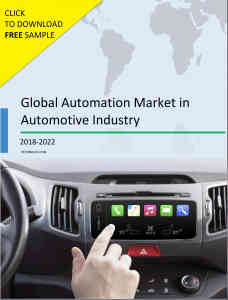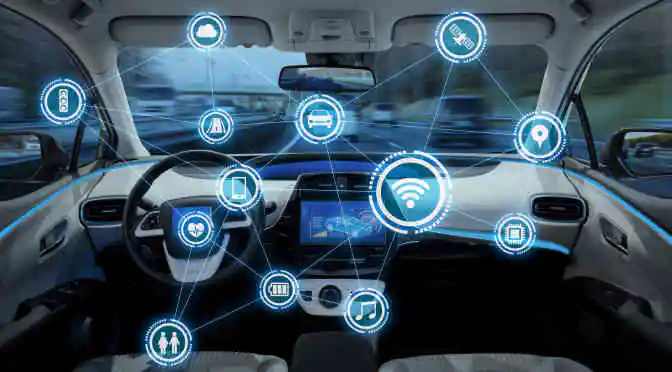Talk of a complex science as automation in the automotive industry, and immediately, questions about the inherent costs and the long R&D cycles take centerstage. Thankfully, advancements in this arena have been frequent and encouraging. And, in the immediate future, auto manufacturing is going to get a lot smarter and profitable, thanks to automation.
 In 2018, automation is already a serious consideration where automotive manufacturing is concerned. Human labor is costly and unpredictable, whilst selectively implemented industrial automation helps automakers eliminate human errors and ensure precision work. By all indications, the end goal for most automakers is a fully automated factory floor, rife with the most cutting-edge technologies.
In 2018, automation is already a serious consideration where automotive manufacturing is concerned. Human labor is costly and unpredictable, whilst selectively implemented industrial automation helps automakers eliminate human errors and ensure precision work. By all indications, the end goal for most automakers is a fully automated factory floor, rife with the most cutting-edge technologies.
Road to ‘automation anywhere’- Trends to watch out for in 2018
Right, let’s summarize the four exciting concepts that hold the key to automation’s widespread presence in the global automotive industry, starting 2018.
- Robotic collaboration
- AI powered autonomous cars
- Machine vision
- IoT powered connected cars
Automation anywhere is an inclusive concept that extends from the car’s design stage to the time when it will burn rubber on the roads. Everything from crafting the vehicle’s body parts, building complex propulsion systems to inspecting the finished product can be completely automated. Removing the human element improves the safety standards, ensures durability and reduces the incumbent costs.
Robotic collaboration- Productivity boosts when humans and robots team up
There is a term for the friendly, collaboration minded robot- Cobot. And, these cobots are developed to play an interactive role with their human handlers while ensuring the latter’s safety and reduced turnaround times. Invented in 1996, cobots have come a long way since, both in terms of functionality and applicability.
Cobots are primarily deployed to perform a computer guided action, with limited or no inherent motive power of their own. These tasks are mostly limited to the steering or redirecting of a payload, in harmonious collaboration with the human technician. However, the recent cobots are exhibiting an enhanced range of capabilities, thereby further encouraging their usage on the factory floor.
AI powered autonomous cars- The face of automation in the automotive industry
Driverless or autonomous technology is the proverbial holy grail in the global automotive industry. While the torchbearers for this technology are many, the format in itself is still a work in progress. Will 2018 prove to be the year that finally gets driverless technology the mainstream appeal?
By all indicators, it surely looks like a strong possibility. The underlying tenets of Artificial Intelligence (AI) are getting stronger by the day and big-name companies like NVIDIA and Bosch are continually refining machine learning to improve AI at the functional level. Importantly, Tesla is synonymous with autonomous technology and is putting in place a body of associated work to justify its positioning.
Machine vision- Eliminating the human factor to improve precision manufacturing
Modern auto manufacturing strives to produce the safest car possible. And, sentiments about hand-crafted automobiles aside, the human touch is often antagonistic to this idea. Humans, the best of them, make mistakes and in a complex specialty like auto manufacturing, mistakes tend to add up.
Thankfully, Machine Vision (MV) is being increasingly employed where safety, reliability and robustness of the end product must be positively ascertained. In automobile manufacturing, MV is employed as an inspection tool that utilizes such cutting-edge formats as 3D imaging, X-ray imaging, infrared imaging and similar technologies to spot the minutest imperfections in the finished products. Furthermore, companies like National Instruments, ViDi Systems and Datalogic are continually improving the science behind MV. In 2018, MV could prove to be a prerequisite where auto manufacturing is concerned.
IoT powered connected cars- final frontier of automotive intelligence?
Essentially a developmental step in line with the driverless/autonomous technology, IoT when employed in automobiles helps them communicate with other automobiles on the road and lessen traffic disruptions and accidents. In other words, Internet of Things (IoT) is the first step in the evolution of the 2018 ready smart car.
However, there is another factor at play here, and it is called Cognitive Computing (CC). The latter represents a collective of technology platforms that are hinged on AI, and utilize such disciplines as machine learning, language processing, human-computer interactions and a plethora of other technologies to offer a truly autonomous driving experience.
In the end, auto manufacturing is set to take a quantum leap in 2018, drawing in a number of established and experimental technologies to integrate the concept of ‘automation anywhere’, on the factory floor and the open roads.



